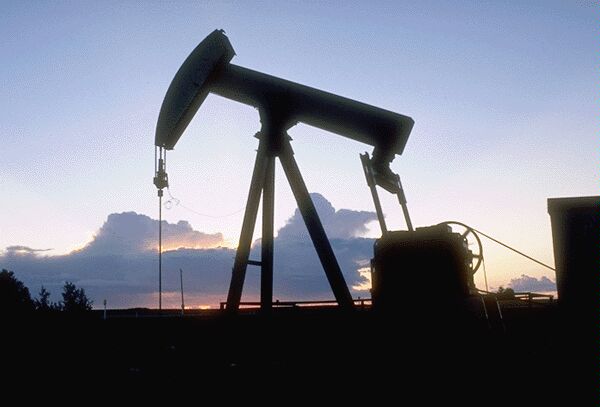In the 50's and 60's. XX century. in the USSR (NA Kudryavtsev, VB porphyry, N. Dolenko etc.) and abroad (the British scientist F. Hoyle and others) revived the various hypotheses of the inorganic (cosmic, volcanic, magmatic) origin of oil . However, in the 6th (1963), 7th (1967) and 8th (1971) International Oil Congress inorganic hypotheses were not supported.
Important for understanding the genesis of oil was to establish in the late XIX - early XX centuries. optical activity of oil, as well as close ties with oil sapropelic organic matter in sedimentary rocks. Sapropelic conjecture first German botanist G. Potonié in 1904-05, further developed by Russian and Soviet scientists - N. Andrusov, Vernadsky, IM Gubkin, ND Zelinsky and others. Sapropelic hypothesis assimilated by the modern theory of the migration of sedimentary origin of oil. Development of ideas about the nature of oil and the conditions of formation of its deposits also contributed works of the German scientist K. Engler, American geologist J. Newberry, E. Orton, D. White, Russian and Soviet scientists - GP Michael, DV Golubyatnikova, MV Abramovich, KI Bogdanovich and others.
This period is characterized by the study of oil have broad geological and geochemical studies aimed at addressing the problem of oil generation and organically related issues oil source sediments. In the USSR, such work performed by AD Archangel in 1925-26. In the U.S., a similar study started in 1926 P. Trask. In 1932 he published a classic work Gubkin "Studies on oil," which played a huge role in the development of ideas about the genesis and formation of its oil deposits. In 1934, in the oil, asphalt and coal deposits were found porphyrins belonging to a molecule of chlorophyll and other natural pigments.
But entirely inorganic theory of the origin of oil is not rejected. There are attempts to combine the organic and non-organic theory of the origin of oil: on the one hand, the radioactive decay in the core hydrogen is formed, which reacts with carbon to form oil-like substance, on the other hand, there are oil biomarkers - compounds definitely organic, with encountered by the "inorganic" oil.
Vitaly Rafailovich Flid, head of the Physical Chemistry of the Moscow Academy of Fine Chemical Technology. Moscow State University, Doctor of Sciences in 2011 [3] stated: "In a few countries - the U.S., Japan, we Troitsk - built systems for simulation of hydrocarbon generation of carbonate and water in the presence of ferrous iron. If you mix calcium carbonate or magnesium salt solution of iron and heated at high pressure, then, as shown in our study, is reliably produced hydrocarbons. At least methane. The gas from the depths of the earth through the channels in the rocks come to the surface facing undergoing different reactions to form heavier hydrocarbons. That is oil. This is the way of formation of mineral oil. Geologists say that there are oil fields, which were completely exhausted, and then the oil they appeared again. Perhaps, this is the oil from the depths of the Earth, which is unlikely to ever end.
Important for understanding the genesis of oil was to establish in the late XIX - early XX centuries. optical activity of oil, as well as close ties with oil sapropelic organic matter in sedimentary rocks. Sapropelic conjecture first German botanist G. Potonié in 1904-05, further developed by Russian and Soviet scientists - N. Andrusov, Vernadsky, IM Gubkin, ND Zelinsky and others. Sapropelic hypothesis assimilated by the modern theory of the migration of sedimentary origin of oil. Development of ideas about the nature of oil and the conditions of formation of its deposits also contributed works of the German scientist K. Engler, American geologist J. Newberry, E. Orton, D. White, Russian and Soviet scientists - GP Michael, DV Golubyatnikova, MV Abramovich, KI Bogdanovich and others.
This period is characterized by the study of oil have broad geological and geochemical studies aimed at addressing the problem of oil generation and organically related issues oil source sediments. In the USSR, such work performed by AD Archangel in 1925-26. In the U.S., a similar study started in 1926 P. Trask. In 1932 he published a classic work Gubkin "Studies on oil," which played a huge role in the development of ideas about the genesis and formation of its oil deposits. In 1934, in the oil, asphalt and coal deposits were found porphyrins belonging to a molecule of chlorophyll and other natural pigments.
But entirely inorganic theory of the origin of oil is not rejected. There are attempts to combine the organic and non-organic theory of the origin of oil: on the one hand, the radioactive decay in the core hydrogen is formed, which reacts with carbon to form oil-like substance, on the other hand, there are oil biomarkers - compounds definitely organic, with encountered by the "inorganic" oil.
Vitaly Rafailovich Flid, head of the Physical Chemistry of the Moscow Academy of Fine Chemical Technology. Moscow State University, Doctor of Sciences in 2011 [3] stated: "In a few countries - the U.S., Japan, we Troitsk - built systems for simulation of hydrocarbon generation of carbonate and water in the presence of ferrous iron. If you mix calcium carbonate or magnesium salt solution of iron and heated at high pressure, then, as shown in our study, is reliably produced hydrocarbons. At least methane. The gas from the depths of the earth through the channels in the rocks come to the surface facing undergoing different reactions to form heavier hydrocarbons. That is oil. This is the way of formation of mineral oil. Geologists say that there are oil fields, which were completely exhausted, and then the oil they appeared again. Perhaps, this is the oil from the depths of the Earth, which is unlikely to ever end.





